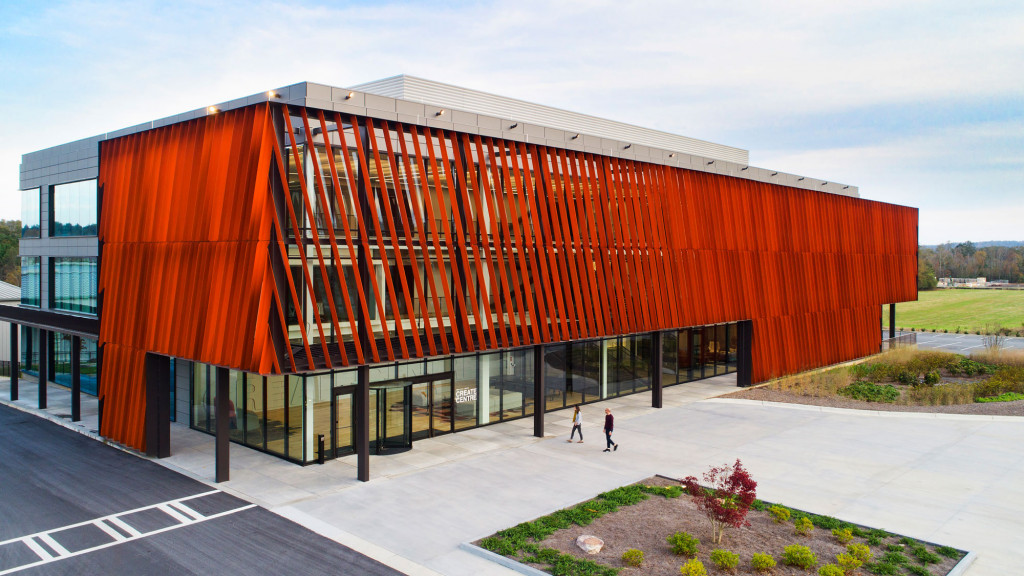From Smart Buildings to Intelligent Placemaking
By Richard Tyson
Today, data and technology play an increasingly important role in our experience of the built environment. Our digital lives — and perhaps more importantly, the global economy in general — are being shaped by the daily arrival of new, intelligent services across every industry and sector. Data and Artificial Intelligence (AI) are being invisibly woven into everything around us, from our phones and cars to hospitals, grocery stores, banks, and insurance companies. We are slowly transforming from a service economy into an intelligence economy, where data is the raw material on which our economy is built.
The conversation around this transformation in the built environment has been largely focused on technology. The “smart city” and “smart building” dialogue is replete with talk of Internet of Things (IoT), sensing, robotics, autonomy, start-ups, data, and AI. There is a strong implication that any path to a successful smart building is paved with technology. A smart building is presumed to be a technologically advanced building with a strong focus on things like efficiency, occupancy, performance, and reduced cost.
But this is only half-right. A technology-rich building does not guarantee that it becomes an intelligent place for the people in it, as anyone who has ever had a bad video-conference experience will attest. An intelligent place is less a building with technology, and much more a place that integrates the right amount of design, experience, operations, and performance intelligence to cultivate desired human engagement and foster meaningful human outcomes: simplicity, health and wellness, discovery, learning, and a sense of welcome, ease, or comfort.
As advanced technologies become embedded in our design tools and daily lives, success will be not measured by technology but by better ways to orchestrate experience and human engagement, and a new horizon for intelligent placemaking. Gensler is actively developing our design practices to integrate data, AI, and intelligent building systems to create intelligent places that have meaningful outcomes from human scale to urban scale.
- Digital model
- Computational design analysis


A deeper role for design intelligence in the era of the digital twin.
As the intelligent world becomes awash in data, as our networks get faster and smarter, and as computing gets more powerful, buildings and places will increasingly have a “digital twin,” a virtual copy that reflects all the things happening in and around the building. This digital evolution is driven by profound advances in visualization, modeling, and simulation that are transforming how we can design for and with clients — new forms of design intelligence that are shaping new possibilities for planning, design, construction, and management.
At the same time, digitally integrated sensing and automation are transforming how we understand how place is used, the connection between places and people, and how healthy, productive, and sustainable a place is. These advances are certainly enabled by technology, and that technology is definitely smart, but to harness it intelligently on behalf of people and community requires more than technology — it requires a practice with vision, judgement, ethics, stewardship, and design processes centered around the human experience.
Seeing beyond technology to human engagement
Ultimately, the digitization of space in the intelligence economy calls less for a focus on technology (which will expand regardless) and more for an integrated approach to designing human engagement enabled by technology. One of the profound implications of a data-driven world is a newfound ability to connect design practices that have been engaged separately. Previously, design for culture and social change has been designed in isolation from product or service design. Similarly, digital and interaction design has typically been conducted in isolation from interior, architecture, or experience design. Likewise, urban scale design and planning have been thought about differently from the design of individual user journeys.
Our spatially digitized world changes all that. Data lets us zoom-in and zoom-out; it allows us to model how a change in interaction (like shopping without having to check-out) changes the user’s expectations of space, how changes in culture and social behavior call for new kinds of support and service, or how new demands for sustainable performance and wellness shape place. Being able to model human engagement across people, space, service, and interaction brings new opportunities and responsibilities in designing for the built environment. As designers, we have the opportunity to take a new, holistic approach — and a responsibility to orchestrate the possible on behalf of the desirable.


